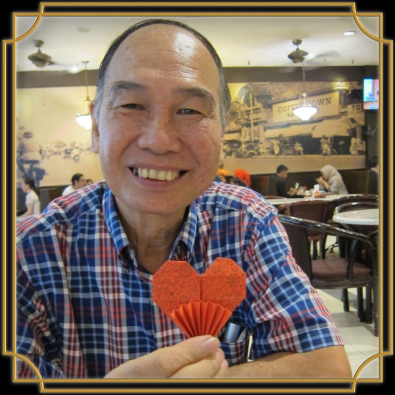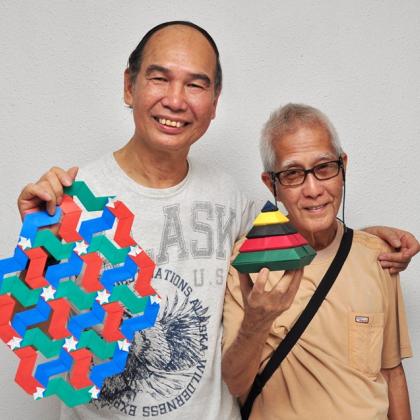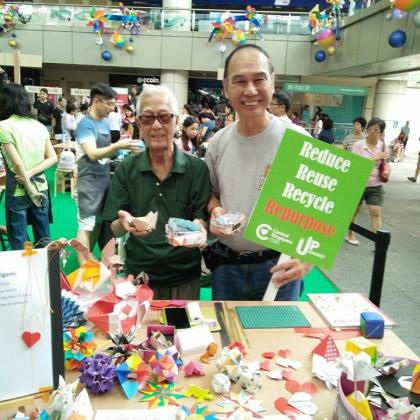Primary tabs

Francis Ow
Singapore
Biography and Contribution to the Development of Paper Folding
Francis Ow Mun Yin was born in Singapore on 14 May 1949 and died on June 29th, 2018.
Life
His journey in Origami began as a pre-school child. He watched the TV programmes of Robert Harbin. It was through him and his book, "Paper Magic" that he learned about Origami. Later, he worked as an engineer for Singapore Telecoms where he repaired telecommunications hardware. He stayed with this company until his retirement. His interest in DIY and making things was evident as he made different “toys” using woodwork and metalwork technology at home. He was a founder of the Singapore origami group in the early 1980s and together with HS Lim, held their first origami exhibition there in 1985. This exhibition attracted together several local folders who formed a tight-knit and supportive group.
Origami
His personal origami interest was mainly geometric designs. Initially 2D, he moved quickly into 3D modular designs and was inspired by the work of Tomoko Fuse. In these pre-internet days, he communicated widely with folders around the world, sending letters containing diagrams and folded examples of his designs. He was not at all interested in glory or recognition and was happy to promote the works of other people, as well as to collaborate on designs.
He was also an admirer of the works of Akira Yoshizawa, who he saw more as an artist than a folder, because he felt origami should be shared and that few people could hope to emulate the artistry of Yoshizawa. His geometrical work reflected this approach – “every fold has to be precise, no guesswork. All the folds are a straight line from one point to another. Anyone can reproduce the same design by following the diagrams step by step”. He also took inspiration from the work of Yoshihide Momotani and Shuzo Fujimoto.
Modular and Hearts
For his modular work, he tried to ensure that the modules are simple to fold but recognised the challenge of the assembly! He also derived modules from traditional bases and models, such as the Traditional Crane. His geometric work encompassed Tessellations, Repeated patterns, Sonobe units, Boxes, Polyhedra, and Intersecting Polyhedra. Many of his ideas have been rediscovered by others, unaware of his ground-breaking work.
At some point, he took a side-step into Heart-themed designs. He said: “Actually, the shape of the origami heart is a geometrical shape. At first, when I made an origami heart, my friends laugh and say that there are just too many straight lines, how can you call it a heart”? He ended up writing a number of books with this theme and encouraged others, including David Petty and Nick Robinson to contribute to them. This small team worked hard to find new ideas and techniques. Eventually, designs from his self-published books were used in a commercial book published by Japan Publications. Shortly before his death, he released another collection “Hearts 4 U” which he specified was to be given away free of charge.
Strip Origami and Late Days
After hearts, he turned his attentions to "Strip Origami" - simple weaving of papers. He made a set called "Woven Stars", ranging from 5 points to 21 points. These stars were easy to make but he found it difficult to diagram. This turned out to be his last area of exploration, as he contracted cancer. He remained optimistic to the end, communicating with his friends by mobile phone from his hospital bed and never bemoaning his personal circumstances.
The article was authored by Nick Robinson, who holds the copyrights for Ow`s works.

